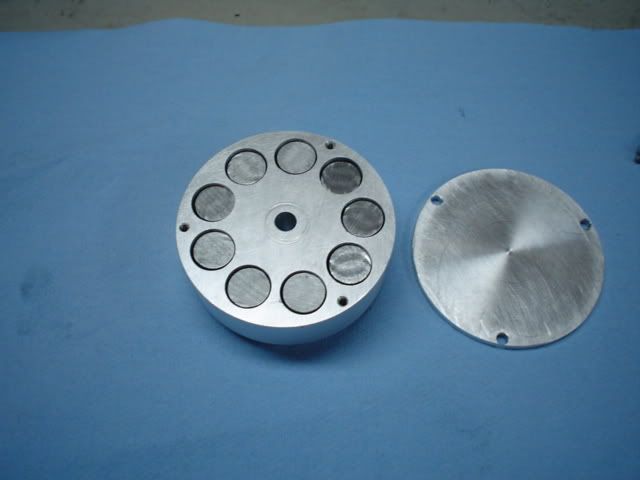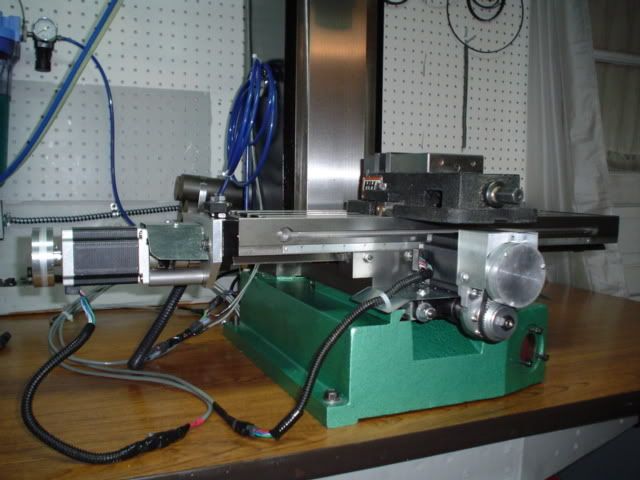With the recent talk of cnc bench mills I thought I would share a major problem I had with my x3 and xylotex drive. When I first built this thing it had some of the worst mid band resonance my inexperienced self had ever seen. The mill was almost unusable because of it. I had been into cars and racing prior to this hobby so I knew of many different harmonic damper designs. I decided to pattern the dampers after a TCI "rattler".
The results were amazing to me. At first it was pointed out to me that it may only be a flywheel effect. I bought into that, but then I did more testing by locking the rollers from any movement. The result was they were then 100% ineffective and the resonance returned. I also tried damping the rollers with viscous fluid. Again, it totally made them ineffective. In use they make a little rattling noise as they soak up the vibrations.
.
Here are some pics of the dampers and then links to a before and after video showing the results of the dampers installed on the motors.



The video clips are in flash player format.
The difference is astounding and so is the mills performance with them installed.
before- http://s109.photobucket.com/albums/n...=damperoff.flv
After- http://s109.photobucket.com/albums/n...t=damperon.flv
Perhaps this style of damper might also serve a purpose for some other machine, with a resonance problem, or heck even a model engine. It's fairly easy to make and scale as needed.
Steve
The results were amazing to me. At first it was pointed out to me that it may only be a flywheel effect. I bought into that, but then I did more testing by locking the rollers from any movement. The result was they were then 100% ineffective and the resonance returned. I also tried damping the rollers with viscous fluid. Again, it totally made them ineffective. In use they make a little rattling noise as they soak up the vibrations.
.
Here are some pics of the dampers and then links to a before and after video showing the results of the dampers installed on the motors.



The video clips are in flash player format.
The difference is astounding and so is the mills performance with them installed.
before- http://s109.photobucket.com/albums/n...=damperoff.flv
After- http://s109.photobucket.com/albums/n...t=damperon.flv
Perhaps this style of damper might also serve a purpose for some other machine, with a resonance problem, or heck even a model engine. It's fairly easy to make and scale as needed.
Steve
.png)


Comment